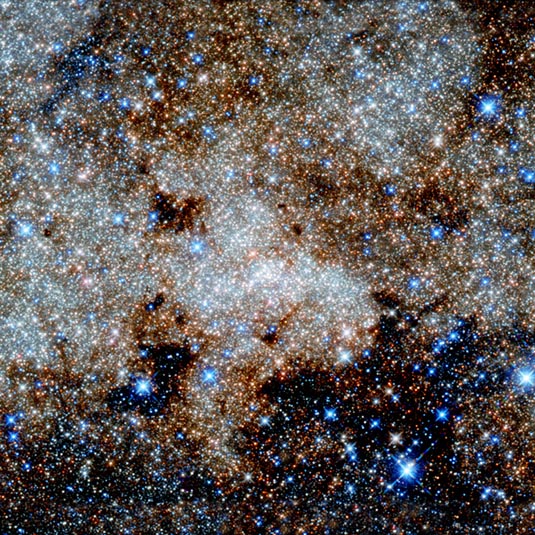
Description: Central Black Hole of our Milky Way galaxy
Position (J2000): RA 17h 45m 40.0409s Dec -29° 0' 28.118?
Constellation: Sagittarius
Distance: 25,000 light years
Image Credit: NASA, ESA, and G. Brammer
Release Date: October 7, 2013
Chandra Image: S1001
ABOUT THIS IMAGE:
This image, not unlike a pointillist painting, shows the star-studded center of the Milky Way towards the constellation of Sagittarius. The crowded center of our galaxy contains numerous complex and mysterious objects that are usually hidden at optical wavelengths by clouds of dust - but many are visible here in these infrared observations from Hubble.
However, the most famous cosmic object in this image still remains invisible: the monster at our galaxy's heart called Sagittarius A*. Astronomers have observed stars spinning around this supermassive black hole (located right in the center of the image), and the black hole consuming clouds of dust as it affects its environment with its enormous gravitational pull.
Infrared observations can pierce through thick obscuring material to reveal information that is usually hidden to the optical observer. This is the best infrared image of this region ever taken with Hubble, and uses infrared archive data from Hubble's Wide Field Camera 3, taken in September 2011. It was posted to Flickr by Gabriel Brammer, a fellow at the European Southern Observatory based in Chile. He is also an ESO photo ambassador.
From Wikipedia:
Sagittarius
A* (pronounced "Sagittarius A-star", standard abbreviation Sgr
A*) is a bright and very compact astronomical radio source at the center
of the Milky Way Galaxy, near the border of the constellations Sagittarius
and Scorpius. It is part of a larger astronomical feature known as Sagittarius
A. Sagittarius A* is believed to be the location of a supermassive black
hole, like those that are now generally accepted to be at the centers
of most spiral and elliptical galaxies. Observations of the star S2 in
orbit around Sagittarius A* have been used to show the presence of, and
produce data about, the Milky Way's central supermassive black hole, and
have led to the conclusion that Sagittarius A* is the site of that black
hole.